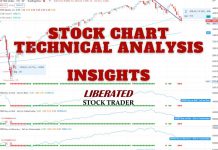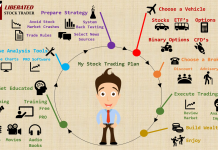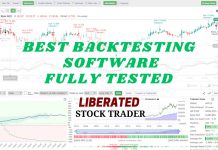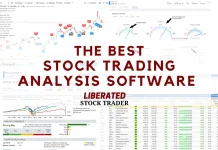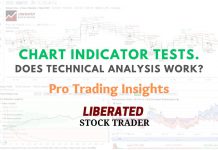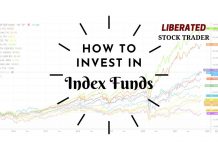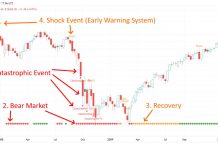What is volume in stock charts?
Volume is the number of securities traded within a certain time frame. It is usually represented by the size of the bars on a stock chart and can be used to measure the intensity of buying or selling pressure. Generally, a high volume indicates strong buying or selling pressure, while a low volume indicates weak buying or selling pressure.
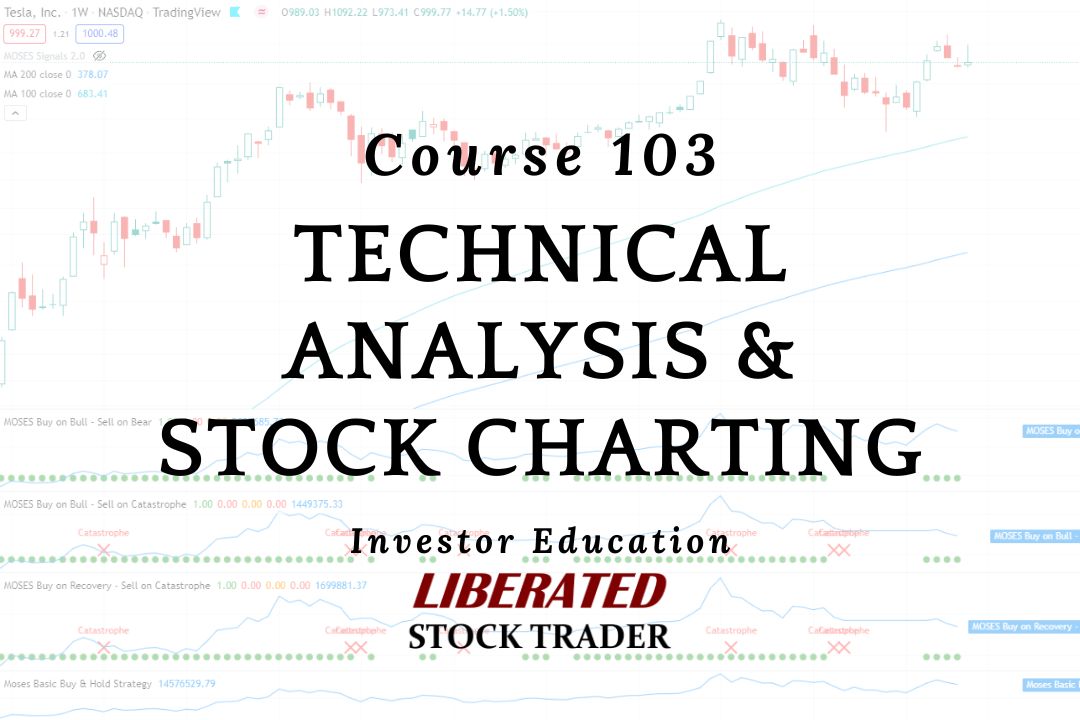
For the Ultimate Guide to Stock Volume, Read Our Advanced Lesson
How do you calculate stock volume?
To calculate the volume, you need to count the number of securities traded during the time frame you are interested in. For example, looking at a 10-minute chart, you need to count the number of securities traded in those 10 minutes.
Volume can be a useful tool for technical analysis as it can be used to confirm trends or reversals. For example, if the price of a security is increasing and the volume is also increasing, this is generally seen as a confirmation of the trend. Similarly, if the price is moving down and the volume is also increasing, this is generally seen as a confirmation of the reversal.
Important facts about stock volume
There are a few things to remember when using volume as a tool for technical analysis.
First, it is important to remember that volume is not always accurate. This is because there are several ways that trades can be executed that may not be captured by the volume data. For example, if many trades are executed over the counter (OTC) or through dark pools, these will not be captured in the volume data.
Second, looking at the volume in conjunction with other technical indicators is important. For example, if the price is increasing but the volume is decreasing, this could be a sign that the trend is losing momentum and may be about to reverse.
Finally, it is important to remember that volume is just one tool that can be used for technical analysis. It should not be used as the sole basis for making investment decisions.
Volume is the fuel in a stock’s movement.
Chart volume is usually expressed as the number of shares traded that day. Viewing volume indicators compared to the average amount of shares traded for a stock is most useful.
For example, if volume increases dramatically for the stock, we can assume there has been some news, earnings release, or external factors acting on the stock.
Look at the chart below for NetFlix (NFLX), a DVD rental “by post/by internet” company. Please closely examine volume and price and what they have in common.
The volume indicator is configured to show a RED Bar if the closing price for the stock is lower than the opening price, meaning “Negative Volume,” and green for days where the closing price is higher than the opening “Positive Volume.”

So, what did you see?
What happened to volume when the price changed?
What happened to the price when the volume spiked?
Now, let’s review the same chart in detail.
In our lesson on volume, we focus on two key phrases.
Volume “Blow off Top” & “Blow off Bottom”
Now look at the chart below and read further for a description of the key concepts. The chart maps Price, Moving Averages 10 & 30, and volume (Red for Negative, Green for Positive).

3 Key Steps are Referenced in the chart.
Step 1
Here, at point 1, we see a considerable change in the direction of price; it was proceeding in a downward trend, then suddenly, there was a spike in volume over two weeks; this is known as a “blow-off bottom.”
It indicates that a key price has been found, where the sellers have lost enough that they need to sell the stock, and the buyers have seen the price decrease enough to see real value in the stock. Of course, other factors contribute, like good news or earnings results. Whatever happened, the volume increased!
Step 2
The stock increased from $20 to $38 in the following three months, a 90% increase, but how would we know this was about to happen? Well, buying at the time the moving averages crossed over would have been a good option; it would not have provided the full 90%, but it would have produced 40%, which, by anyone’s reckoning, is an excellent result. However, we see a monster, “Blow off Top,” the enormous red Spike, a powerful sign to sell as soon as possible.
From stage 2, we see the stock move in a sideways pattern and eventually decrease to $19; the ride is well and truly over. However, you would not own the stock, as you would have sold when the moving averages crossed.
The stock price started to increase in mid-November 2008, but volume tells us nothing; WHY?
Indicators do not tell us something 100% of the time, but we need to recognize it when they do. The moving averages cross at $25, an excellent time to buy.
Step 3
Here, we see massive buying; the volume goes through the roof. Important to note here is that we are comparing the volume for the stock to its history. This is the second biggest volume surge of the year for Netflix and is significant.
Why did it take off? We should always seek enlightenment!
It reported excellent earnings, and because of the recession, people switched from buying more significant ticket items such as Cars and Plasma TVs to staying at home and renting movies. Netflix reported a massive increase in new members.
In the chart, this note shows that the price “Gapped Up.” What does this mean? This means that the stock price in extended-hours trading was so strong that the opening price on the following day was significantly higher than even the high price for the previous day, thus showing a gap in the price pattern in the chart.
Warning: Some volatile stocks show a lot of price gaps. While price gaps might sound good when they gap upwards, if they gap down against you, then they are awful. Avoid stocks with any history of strong negative gapping, as gaps do not allow you to sell at the price you want to.
Summary
So what did we learn? Volume is essential, and reading it should become second nature. Especially when searching for winning stocks, we should ideally look for stocks with increased volume to have a better chance of a quicker, less risky win.
This will be discussed in Trading Strategies in a later training module.
This was a lot of information and is a vital tool in your toolbox.


